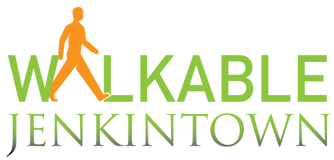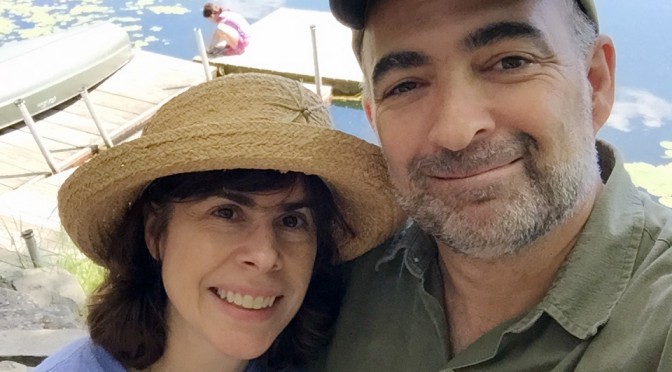Louise and I have lived together in Jenkintown since late 2002, marrying a year later. The year before, Louise’s mom had passed away, and while she stood to inherit the house, she considered selling it and buying elsewhere. We didn’t much like the house at the time, mainly because of its tiny kitchen and lack of porch. After an exhaustive and frustrating search for a better house in a location as good as Jenkintown, I finally said to Louise, “You can always improve the house, but you can’t always improve the location.” So, here we are.
My interest in pedestrian infrastructure stems from my personal and professional background. In 1990, I started publishing Roadside Magazine, that found an audience of people who loved traveling America’s back roads and Main Streets. The magazine initially focused on the charms of the great American diner, but the travels that took me there inspired a deeper appreciation for the towns in which we found them. Before long, we announced our “Recipe for an American Renaissance” and its ingredients: “Eat in diners. Ride Trains. Shop on Main Street. Put a porch on your house. Live in a walkable community.”
Our house fullfills four of the five ingredients of the Recipe (still no porch), but I welcomed the opportunity to live in a town and area so rich in aesthetics, history, and culture, and I looked forward to getting involved in the community.
This blog represents my attempt to help make Jenkintown as great a community as possible. Thanks to my travels around this country visiting hundreds of other communities, learning how they have thrived or declined, I find myself in a unique position to compare our progress against similar neighborhoods and older inner-ring suburbs. No place is perfect, and they all have their quirks, but when they do things right, it shows in their downtowns, their parks, their schools, and certainly their streetscapes.
Forgive me, but I contend that our streetcapes are becoming a greater mess, and this latest project is not improving matters. Yes, the fresh asphalt certainly provides a smooth, uniform surface that makes driving our streets a sheer pleasure, but in a walkable community, I care more about the pedestrian experience. The policy that guides our Borough has rendered our sidewalks a patchwork mess of often substandard construction that will decay much faster than a uniform, wholesale approach to pedestrian infrastructure would provide.
Beyond that, despite the assurances by the Borough that pedestrian safety underlies this program, the end results will continue to hurt people, both physically and in no small way, financially.
I contend that a community asset should be a community responsibility. We don’t charge tuition to our schools, we share the cost of maintaining the streets, and we don’t levy an entrance fee to our playgrounds. Why are sidewalks (and curbs) excluded from this single-payer system?
We need to find a better way, one easier for everyone, not just the wealthier households. Sidewalks are, and should remain, a public right of way. I contend that we are spending individually far more than we would as a community for a better streetscape and we are getting far less for that money. The money so far spent just on the patchwork fixes on Runnymede paid to a single, lowest-bidding contractor would probably rebuild the sidewalks for the whole street.
Louise and I merely want this discussion to finally take place. Council thinks you have no real issues with this policy, but my discussions with other residents show otherwise. I know that my prose often suffers from an ascerbic and sarcastic tone, but I come from a hardscrabble background, raised by a single mom with no patience for nonsense. She had to battle her way to a comfortable lifestyle that only came late in life. I inherited her attitude if little else. Meet with me, and you’ll find I’m not just a crank. If I were, there’s no way I’d be lucky enough to marry a woman like Louise.
Maybe we can improve the location, and I’m happy to do my part in what should be a shared effort. A better planned, more equitable, approach will certainly bring this community greater benefits than what we have now. I’m betting my house on it.




